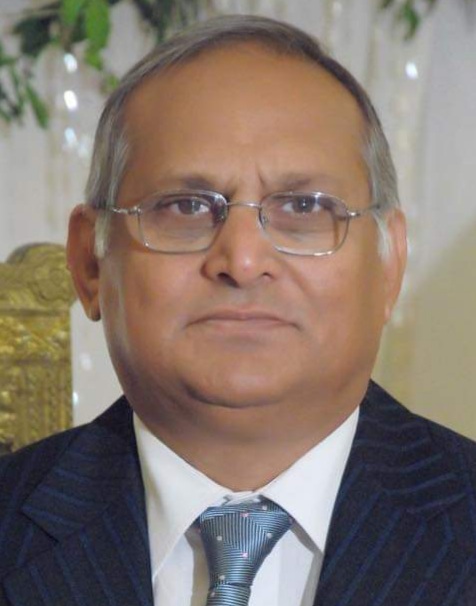By Ghulam Haider Shaikh
The reaffirmation of Pakistan’s commitment to regional peace and stability by the Chief of Army Staff comes at a defining moment in South Asia’s political climate, where tensions remain high, alliances are being redrawn, and uncertainty continues to cloud the future of inter-state relations. In this context, the Army Chief’s declaration is not merely a formality—it is a strategic message directed to domestic, regional, and international audiences, signaling that Pakistan seeks to avoid unnecessary confrontation and instead favors diplomacy, dialogue, and restraint.
Pakistan has always projected itself as a peace-seeking nation, one that pursues regional equilibrium based on mutual respect, sovereign equality, and non-interference. However, it has often been forced into reactive defense postures due to a combination of regional hostility, unresolved disputes such as Kashmir, and persistent misinformation propagated by rival nations. The statement from the COAS should be viewed as part of a broader narrative—that Pakistan wishes to break the cycle of hostility, and is prepared to take the lead in promoting sustainable regional peace, provided there is a genuine reciprocation of intent from its neighbors.
In the backdrop of shifting global alignments and the United States’ recalibration of its strategic priorities in Asia, South Asia finds itself at a critical juncture. While Pakistan’s internal challenges remain significant—ranging from economic fragility to counterterrorism—the broader strategic doctrine appears to be evolving in a direction that prioritizes regional cooperation over cold-war style rivalries. The Army Chief’s articulation of peace is, therefore, a reflection of a larger policy shift that recognizes the costs of prolonged instability and the opportunities that peace can unlock.
Importantly, the message of peace does not equate to pacifism or negligence of national defense. Pakistan maintains robust deterrence capabilities, both conventional and nuclear, and has shown time and again that it will not hesitate to respond with full resolve if provoked. But the wisdom lies in preventing the need for such a response through engagement, crisis management, and confidence-building. The COAS’s reaffirmation emphasizes this wisdom—retaining strength but seeking stability.
The geopolitical rivalry between India and Pakistan has long been a source of volatility in the region. The border skirmishes, the military standoffs, and the absence of meaningful dialogue have only served to deepen mistrust. In this context, Pakistan’s emphasis on peace is an invitation to revisit the diplomatic channels that have remained frozen for too long. Unfortunately, India’s political climate, driven by electoral polarization and majoritarian nationalism, has not been conducive to dialogue. Nonetheless, it remains Pakistan’s responsibility to keep the door of diplomacy open, regardless of the adversary’s unwillingness, because peace is not a gift—it is a choice.
Another dimension of the COAS’s message relates to Afghanistan and the broader Central Asian region. Peace in Pakistan is closely tied to security across its western border. Any regional strategy must, therefore, include strong border management, counter-extremism coordination, and a shared commitment to preventing the re-emergence of terrorism in the region. Pakistan has played a critical role in facilitating Afghan peace talks in the past and continues to advocate for an inclusive government in Kabul. This balanced approach—firm on national security yet open to regional reconciliation—forms the bedrock of Pakistan’s modern strategic thinking.
Moreover, peace must not only be pursued externally but must also reflect internally. Political stability, economic growth, and social harmony within Pakistan are deeply linked to a peaceful neighborhood. Trade corridors like CPEC and regional connectivity projects can only reach their potential if the region is secure and predictable. The COAS’s call for peace, therefore, also speaks to investors, development partners, and regional institutions—it says that Pakistan is ready to be a responsible stakeholder in regional development, provided the environment allows it.
The army’s role in national security extends beyond the battlefield. In natural disasters, infrastructure development, and border control, the institution plays a significant role. This makes its voice in matters of peace and war particularly influential. When the COAS speaks of peace, it carries institutional weight, and it becomes part of the national policy narrative. For peace to thrive, however, this institutional voice must be echoed by the civilian leadership, political parties, media, and civil society. It must translate into diplomatic engagements, parliamentary resolutions, and cross-border initiatives.
There is also a symbolic importance to the timing of the statement. In a world where conflict is increasingly hybrid—fought not just with weapons but with misinformation, cyberattacks, and economic pressure—Pakistan’s calm and confident signaling of peace sets a tone that is both mature and strategic. The responsibility now lies with regional and global actors to acknowledge this stance and respond constructively.
In conclusion, the Army Chief’s reaffirmation of Pakistan’s commitment to regional peace and stability is a welcome and necessary declaration at a time when the region needs fewer threats and more trust. It is a reiteration of Pakistan’s long-standing belief that peace is not a sign of weakness but of wisdom. It reflects strategic clarity, internal strength, and a forward-looking vision. The region would do well to recognize this message not just as rhetoric, but as a genuine opportunity for resetting regional priorities. Peace is not achieved by hope alone; it requires intent, readiness, and repeated reaffirmation—and Pakistan has once again shown that it possesses all three.

